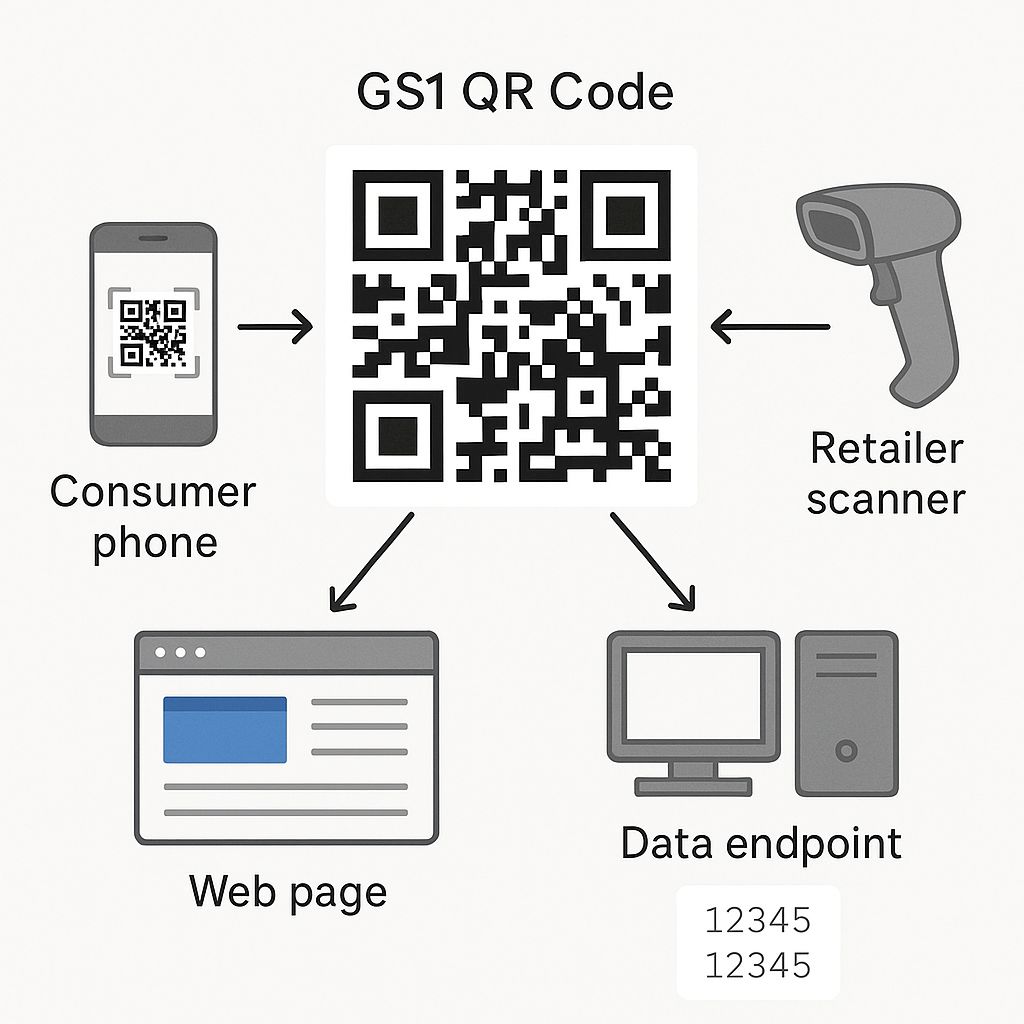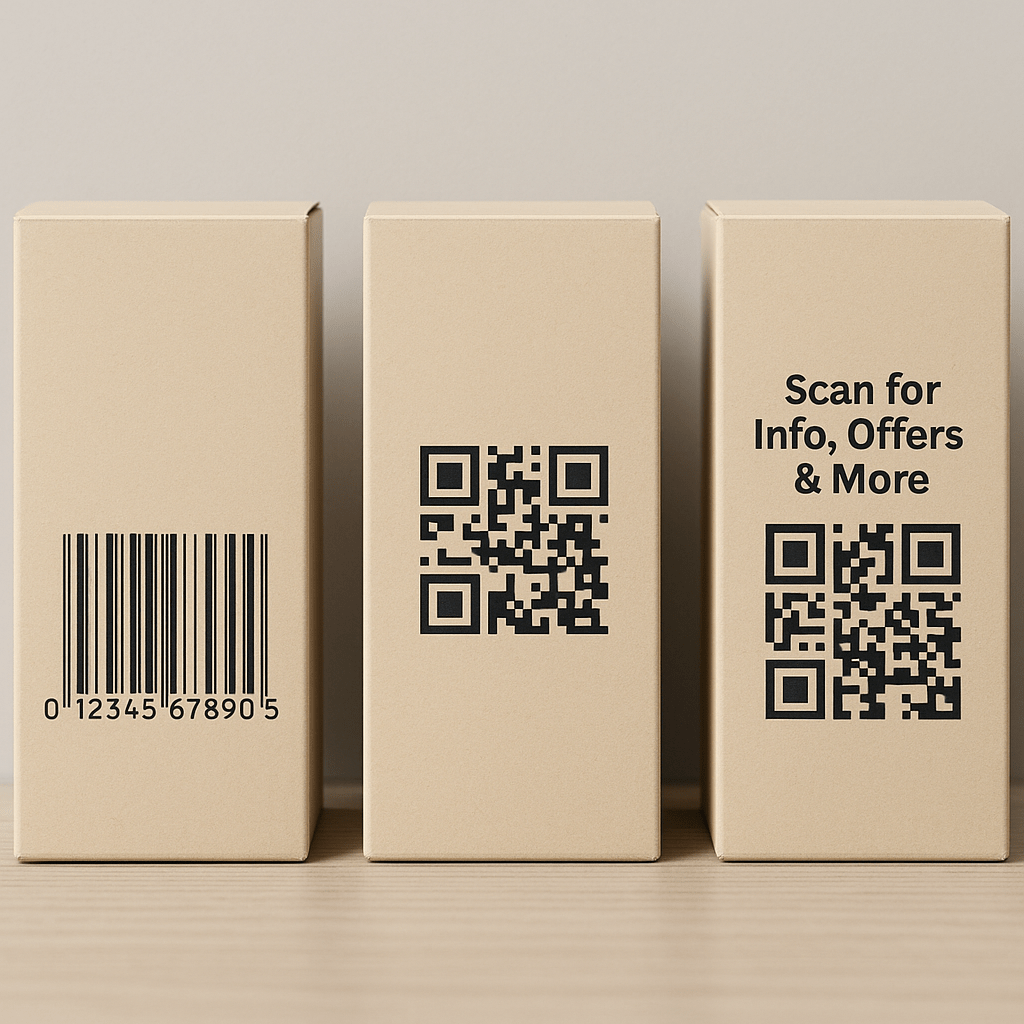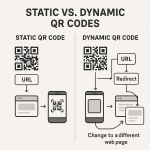What is a GS1 QR Code?
For decades, the humble black-and-white striped barcode has been a silent hero of retail. That familiar *beep* at the checkout counter is the sound of efficiency, a simple code linking a physical product to its price. Then came the QR code, a pixelated square that turned our smartphone cameras into portals to websites, menus, and tickets.
But what if you could combine the reliability of the traditional barcode with the data-rich, web-enabled power of a QR code? What if a single symbol on a product could speak a different language to everyone who scans it—the consumer, the retailer, the supply chain manager, and the recycler?
This isn't science fiction. It's the reality of the GS1 QR Code, an evolution in product identification poised to change everything we thought we knew about barcodes. This guide will demystify what a GS1 QR Code is, how it works through the magic of the GS1 Digital Link, and why it's set to become the new global standard.
The Core Idea: More Than Just a Link
At first glance, a GS1 QR Code looks just like any other QR code. The crucial difference isn't in its appearance, but in the data it contains and the standardized structure of that data. A standard QR code you make online usually points to a single, static destination, like a homepage URL. A GS1 QR Code is much smarter.
A GS1 QR Code holds a GS1 Digital Link. Think of it like a super-powered web link. Instead of just pointing to one page, this special link can direct different users and systems to different information, all from a single scan.
The Analogy: A regular QR code is like a key that opens only one door. A GS1 QR Code is like a master keycard that gives the right person access to the right room—the consumer gets the showroom, the stock manager gets the warehouse, and the technician gets the utility closet.
The Magic Ingredient: What is GS1 Digital Link?
The GS1 Digital Link is the technology that gives the GS1 QR Code its power. It's essentially a standardized way to structure a web link so that it contains specific product identification data. The structure follows a simple, predictable pattern defined by the global standards organization, GS1.
The Anatomy of a GS1 Digital Link
A GS1 Digital Link URI (Uniform Resource Identifier) is built from several key components:
- Domain: The brand's own website (e.g., `https://brand.com`).
- Primary Identifier: This specifies the type of code being used, most commonly ` /01/ ` for a GTIN (Global Trade Item Number).
- Identifier Value: This is the product's unique GTIN, the same number found in a traditional EAN/UPC barcode.
- Optional Qualifiers: This is where it gets powerful. You can add more data, like a batch/lot number (` /10/ `) or a serial number (` /21/ `), to create links for specific product instances.
Putting it together, a link might look like this: `https://mybrand.com/01/09506000134352/10/AB-123`
When this link is encoded into a QR code, any standard smartphone can scan it. The user's device is then sent to this URL. The brand's website has a "resolver" that reads the link, understands the data, and decides where to send the user. For example:
- A consumer's phone might be redirected to a rich product page with videos, nutritional info, and sustainability credentials.
- A retailer's scanner might interpret the same link to get stock level information or expiry date warnings.
- A supply chain system could be directed to a logistics portal with tracking history.

Benefits: Why is This a Game-Changer?
The move towards a single, data-rich 2D barcode on packaging unlocks immense value across the entire product lifecycle.
For Consumers: An Enriched Experience
Shoppers are more curious and demanding than ever. A GS1 QR Code bridges the gap between the physical product and a universe of digital information. A single scan can provide:
- Detailed Product Information: Full nutritional data, allergen warnings, sourcing ethics, and sustainability certifications.
- Usage Guides & Recipes: How-to videos, assembly instructions, or recipes that use the product.
- Promotions & Loyalty: Instant access to coupons, special offers, or loyalty program sign-ups.
- Warranty & Support: Easy product registration and direct access to customer support.
For Brands & Retailers: Unprecedented Insight
The benefits extend far beyond the checkout line. Brands and retailers gain powerful new capabilities:
- Enhanced Supply Chain Visibility: Track products from factory to shelf with greater precision, using batch and serial numbers embedded in the code.
- Improved Inventory Management: Scan to check expiration dates, manage stock rotation (first-in, first-out), and prevent food waste.
- Efficient Product Recalls: Quickly identify and isolate affected batches, providing targeted information to consumers who have purchased a recalled item.
- Direct Consumer Engagement: Create a direct marketing channel on your product's packaging, gathering valuable data on consumer behaviour.
- Counterfeit Protection: Use serialized codes to create a secure, verifiable link for authenticating high-value goods.
Sunrise 2027: The Global Push
The retail world is actively moving towards this standard. The "Sunrise 2027" initiative is a global effort led by GS1 for retailers to be ready to scan 2D barcodes, like the GS1 QR Code, at the point-of-sale by the end of 2027. This means the traditional barcode's reign is ending, and the 2D barcode will become the new standard.
Comparison: GS1 QR Code vs. Others
Let's clarify how a GS1 QR Code stacks up against the codes you already know.
vs. Traditional EAN/UPC Barcode
- Data: A traditional barcode holds only the product's GTIN (a string of numbers). A GS1 QR Code holds a web link that contains the GTIN plus potentially much more.
- Functionality: A barcode is for Point-of-Sale (POS) lookup only. A GS1 QR Code works for POS and also connects to the internet for unlimited consumer and supply chain applications.
vs. Standard QR Code
- Structure: A standard QR code can point to any URL, with no standardized format. A GS1 QR Code uses the highly structured and globally recognized GS1 Digital Link standard.
- Interoperability: Because the GS1 standard is global, any system designed to read it knows exactly what to do with the data. A standard QR code offers no such guarantee.

How to Get Started with GS1 QR Codes
Implementing GS1 Digital Link might sound complex, but it's a logical process. If you're a brand owner, here is a simplified roadmap:
- Become a GS1 Member: First, you must license a GS1 Company Prefix from your local GS1 Member Organisation. This prefix is the foundation for creating all your unique identifiers.
- Assign GTINs: Use your prefix to create a unique Global Trade Item Number (GTIN) for each product variation you sell. If you already use barcodes, you already have these.
- Construct the Digital Link URI: Structure your web link using your domain and the GTIN as per the standard. For example: `https://yourbrand.com/01/YourGTIN`.
- Configure Your Resolver: This is the technical part. Your website needs to be programmed to interpret incoming Digital Link URIs. It needs to check the link for identifiers (like GTIN or batch number) and redirect the user to the correct content. Several enterprise solutions and platforms can help manage this.
- Generate & Print the QR Code: Use a QR code generator to turn your complete GS1 Digital Link URI into a QR code image. This code is then integrated into your product packaging design.
The Future is Scannable and Smart
The GS1 QR Code powered by Digital Link isn't just a better barcode; it's a fundamental shift in how physical products connect to the digital world. It's the key to meeting consumer demands for transparency, building more resilient and intelligent supply chains, and future-proofing products for a world where every item has a digital twin.
The era of single-purpose barcodes is drawing to a close. The future is a single, unified, and powerful code on every product package, ready to unlock a world of information with a simple scan. That future is the GS1 QR Code. ✅

